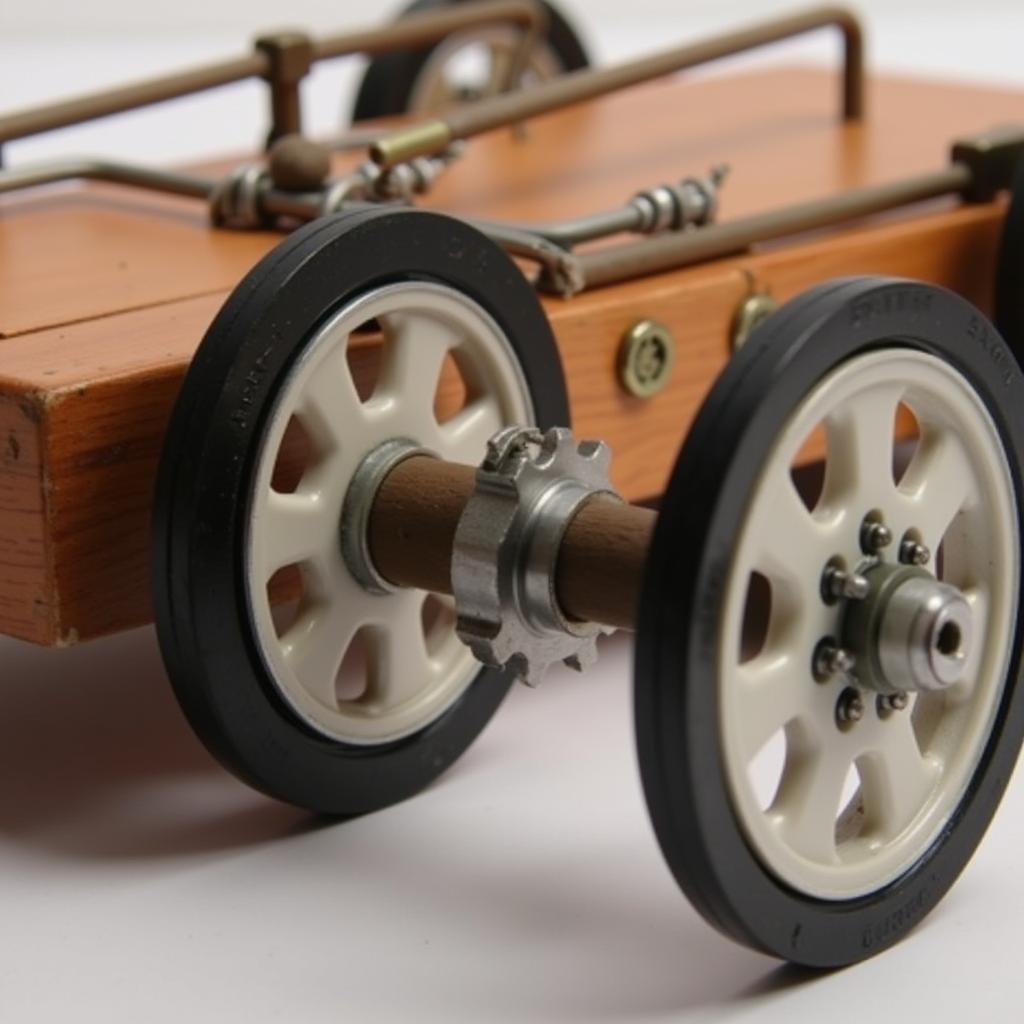Mouse trap cars are a classic science project, a fun way to learn about physics and engineering. But getting your car to travel the furthest distance can be tricky. Several Common Mouse Trap Car Problems can hinder performance. This article will cover the most frequent issues and provide practical solutions to get your car rolling smoothly and efficiently.
Understanding the Mechanics of a Mouse Trap Car
Before diving into troubleshooting, it’s important to understand the basic mechanics of a mouse trap car. The power source, the mousetrap, stores potential energy. When the trap is triggered, this energy is converted into kinetic energy, turning the axle and propelling the car forward. Friction, alignment, and other factors can impact how effectively this energy transfer occurs.
Similar to a mousetrap car problem to be solved, many issues can be diagnosed by carefully observing the car’s movement.
Why Won’t My Mouse Trap Car Move?
If your car isn’t moving at all, there are a few key areas to check. First, ensure the string is wound tightly and securely attached to both the lever arm and the axle. A loose string won’t effectively transfer the energy. Second, examine the lever arm. Is it long enough? Is it bending or flexing excessively? A weak or poorly designed lever arm can significantly reduce the car’s power. Finally, check the axles and wheels. Are they spinning freely? Excess friction can prevent the car from moving.
My Mouse Trap Car is Slow – What’s Wrong?
A slow mouse trap car can be frustrating. One common culprit is friction. This could be due to the axles rubbing against the chassis, the wheels not rolling smoothly, or the string dragging on the car body. Lubricating the axles and ensuring the wheels are properly aligned can drastically reduce friction and improve speed. Another issue could be the lever arm. A short lever arm delivers less power, while a long, thin lever arm might bend or break under stress. Experiment with different lever arm lengths and materials to find the optimal balance. This is comparable to car rear alignment problem, where misalignment leads to reduced efficiency.
 Mouse Trap Car Wheel and Axle Friction
Mouse Trap Car Wheel and Axle Friction
How to Minimize Friction in a Mouse Trap Car
Reducing friction is crucial for maximizing the distance your mouse trap car travels. Use lightweight materials for the chassis and wheels. Consider using CDs or DVDs for wheels as they are smooth and lightweight. Lubricate the axles with graphite or Teflon-based lubricants to minimize friction. Ensure the string is thin and doesn’t rub against the car body. Addressing mousetrap car friction problems can significantly improve its performance.
What About Wheel Alignment and Size?
Proper wheel alignment is essential for a straight and efficient run. Ensure the axles are parallel and the wheels are perpendicular to the ground. Uneven wheels or a skewed axle will cause the car to veer off course, wasting energy. The size of your wheels also plays a role. Larger wheels cover more ground per revolution, but they also require more energy to start rolling. Smaller wheels are easier to get moving, but might not be as efficient for long distances. Experiment to find what works best for your car design.
 Mouse Trap Car Wheel Alignment
Mouse Trap Car Wheel Alignment
Troubleshooting Common Mousetrap Car Issues: A Step-by-Step Guide
- Car doesn’t move: Check string attachment, lever arm integrity, and wheel rotation.
- Car is slow: Examine friction points, lubricate axles, adjust lever arm length, and check wheel alignment.
- Car veers off course: Ensure wheel alignment and axle straightness.
- String slips: Tighten string winding and consider using a knot or other method to secure it to the axle.
“A common mistake is using too thick a string. A thin, strong fishing line works best for minimizing friction and maximizing energy transfer,” says Dr. Amelia Rodriguez, Mechanical Engineering Professor at the University of Texas.
Conclusion
Building a successful mouse trap car involves understanding the interplay of various factors, including friction, lever arm design, wheel alignment, and string tension. By addressing these common mouse trap car problems, you can optimize your car’s performance and achieve maximum distance. For personalized assistance with your automotive needs, don’t hesitate to contact AutoTipPro at +1 (641) 206-8880 or visit our office at 500 N St Mary’s St, San Antonio, TX 78205, United States. We’re always happy to help!
“Remember, patience and careful observation are key. Don’t be afraid to experiment with different designs and materials to find what works best for your mouse trap car,” adds Dr. Rodriguez.






Leave a Reply